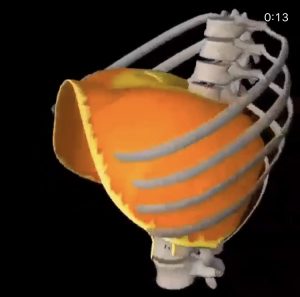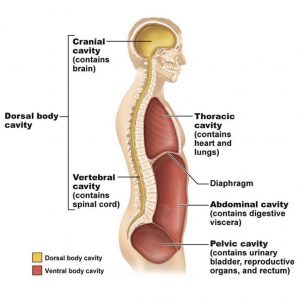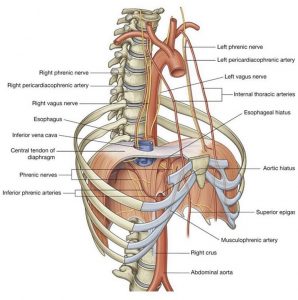Circuit 1: Basic Three Dimensional Breathing Practice
Breathing is automatic, right? So simple, you don’t need to think about it. And it is that simple, when we’re talking about survival. As a result, it may seem a bit silly to think of practicing optimal breathing.
When we look a bit deeper however, what we can easily see is that how we’re breathing can change dramatically – depending upon the physical and mental state we’re in.
 Stress, exercise and training, and busy lifestyles can all make less optimal breathing habits more likely, and that can lead to a host of conditions that go from hardly noticeable (fatigue, chronic tightness, anxiety) to very problematic (low back pain, weakness, high blood pressure).
Stress, exercise and training, and busy lifestyles can all make less optimal breathing habits more likely, and that can lead to a host of conditions that go from hardly noticeable (fatigue, chronic tightness, anxiety) to very problematic (low back pain, weakness, high blood pressure).
So, what is three-dimensional breathing?
Simply put, it’s our ability to expand and relax ALL of the cavities of our upper body from the lower abdomen and pelvis, to our rib cage and trunk, both front to back and side to side, rather than using only our chest and upper cavity.
What Are Your Goals With This?
1. To move away from always being in or close to a sympathetic – shallow breathing in the chest, “fight or flight” state of being, and move into a more restorative, relaxed, parasympathetic state.
When parasympathetic nervous system activity is higher, you’re more relaxed and better able to recover, sleep, and generally feel less tired – and more rejuvenated. Conversely, what are some of the typical signs of being chronically in sympathetic? Having a higher resting heart rate, sweating or feeling anxious, muscle fatigue and achiness, and inflammation, to name a few.
2. To improve your overall health and core stability, especially when used in conjunction with the other fundamental skills such as the basic abdominal brace that you have access to in this course.
In terms of your health, 3-D breathing can improve the mobility of your spine, improve digestion and organ health, and improve the functioning of your gastrointestinal system, among many other things.
3. And lastly, as mentioned, to improve the capacity to use ALL of these breathing regions – thoracic, abdominal, pelvic – during a typical respiratory cycle. For various reasons, one area may dominate over another at certain times, but you need the ability to access all three in order to be healthy and train effectively.
Here Are TIPS to Enhance Your Practice:
- I love practicing first thing in the morning when I wake, or right before bedtime. In fact, lying in bed prior to getting off to sleep can be the ideal time. You’ll notice a slower respiratory rate and be able to feel more relaxed and at peace.
- Breathing practice can happen in many different positions. None are perfect for every single person. Lying down in a supine position is probably the best position for most people, but feel free to bring this practice into a host of different positions and at different times of day.
- Feel free to place a pillow under the head to create optimal alignment/comfort.
- None of these breathing skills should ever be practiced forcefully. Relying too much on muscle strength or force can lead to some compensation.
- Exhale for twice the amount of time you inhale.
- A 2 – 1 – 4 – 1 count strategy can work very effectively, however, feel free to choose a rhythm that works best for you. The key is to remember to exhale for twice as long as you inhale.
- A 2 – 1 – 4 – 1 count looks like this: 2 seconds inhale through the nose, 1-second pause, 4 seconds exhale through pursed lips, 1-second pause, then repeat. Doing this will give you 8 seconds per breath and around 7-8 breaths a minute.
Spending as little as 1 minute up to 5 minutes practicing these skills can help restore optimal health, improve recovery and rejuvenation, and lead to enhanced sleep and an overall feeling of well-being.
Any shoulder, neck, mid-back, chest, or rib pain? Have you struggled with gastroesophageal reflux? Have you been told or found to have low blood oxygen levels? Do you have any breathing “issues”?
 Any of these kinds of daily challenges could be the result of your breathing habits – which could lead to some disfunction of your diaphragm.
Any of these kinds of daily challenges could be the result of your breathing habits – which could lead to some disfunction of your diaphragm.
The diaphragm is the most important muscle of inhalation. It separates the thoracic cavity, containing the heart and lungs, from the abdominal cavity.
As the diaphragm contracts, the volume of the thoracic cavity increases and air is drawn down into the lungs. It also has very important fascial connections to the sternum, the ribs, the thoracic and lumbar spine, and abdominal organs.
It also plays an important role in non-respiratory functions (think of your bathroom habits as one example) by increasing abdominal pressure when needed.
 It can prevent acid reflux by exerting pressure on the esophagus as it passes through the oesophageal hiatus.
It can prevent acid reflux by exerting pressure on the esophagus as it passes through the oesophageal hiatus.
What’s more, diaphragm muscle trigger points can lead to referred pain in the rib cage or shoulder.
What’s the point in sharing all of this technical information?
It is simply to make the point that proper breathing is critical for your health, training and recovery. It’s often overlooked and taken for granted. Don’t!
